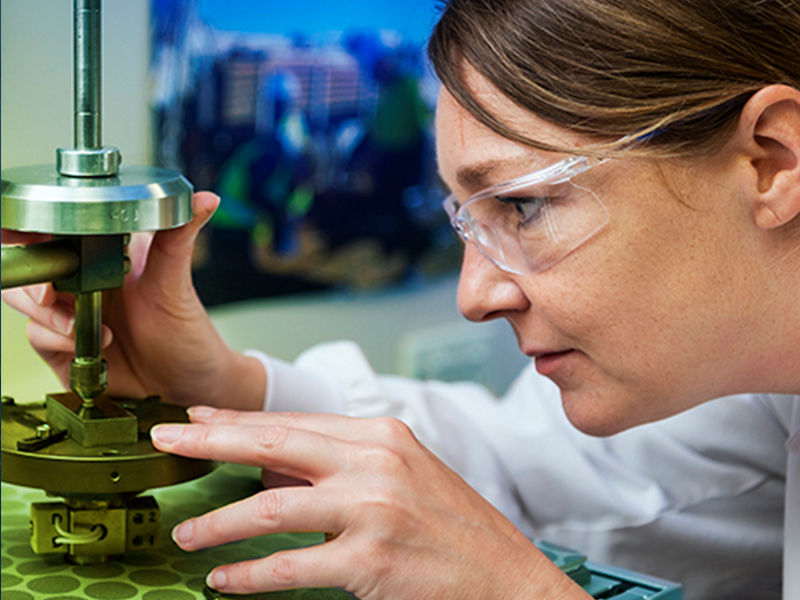How innovation can lead the COVID-19 recovery
As the economic impacts of COVID-19 present ongoing challenges to Australian businesses, the focus is firmly on ways to reinvigorate the national economy and UniSA experts suggest advancing local manufacturing presents a key opportunity.
Alongside researchers, Government and industry are also reviewing the nation’s onshore manufacturing capabilities and now is the ideal time to harness innovation and partnerships in this sector to underpin the economic rebound.
The pandemic has placed a spotlight on Australia’s reliance upon global supply chains and equally highlights opportunities to build a sustainable local manufacturing sector to help stimulate employment and economic growth.
This is reinforced by the Director of UniSA’s Future Industries Institute Professor Emily Hilder. “In tragedy lies opportunity, and we have a real chance to seize this moment and lay the foundations for a renewed focus on manufacturing in our country,” Prof Hilder says.
Prof Hilder warns that the current pandemic won’t be the last – or the worst and we can learn a tangible lesson from this crisis.
“It’s true that a lot of things stopped being made in Australia because companies couldn’t compete on price, but we are more competitive than people realise.”
“We have great connectivity between early stage research and development, excellent relationships between government and industry, and the right mix in our economy to respond to these challenges.”
“The real benefit to industry is that through collaboration we can develop new technologies that will support the long-term viability of manufacturing businesses in Australia.”
UniSA is already demonstrating how such partnerships can deliver successful outcomes for Australian manufacturing.
Industry Associate Professor Colin Hall has recently completed a CRC project with two companies, LaserBond and Boart Longyear, helping the mining industry to tackle a $30 billion problem of wear and tear by extending the life of drilling components through protective coatings.
Industry Assoc Prof Hall says this project involved the development of both laser clad and thermal spray coatings through their industrial partner LaserBond. Coatings were tested in the lab for wear, impact and corrosion resistance and simultaneously tested in the field by Boart Longyear. The unique aspect of the project has come about by the combination of both lab and actual drilling trials. This is not normally an option for coating development, as conducting drilling trials is expensive and drillers are reluctant to “experiment” while they are trying to drill a hole. The Future Industries Institute now has an extensive tribology laboratory that can simulate and accelerate wear to help develop protective coatings faster.
The results have not only delivered extended lifetime of components with three products implemented by LaserBond, but it has also seen the team venture into agricultural applications. Preliminary work, funded through the Sugar Research Association, has shown that a similar approach could lead to sugar cane cutting blades lasting longer.
Industry Assoc Prof Hall predicts a turbulent few years ahead for the manufacturing sector in the wake of COVID-19, with supply and production chains disrupted, but says it’s an ideal time to assess the industry.
“One good thing that has come out of this crisis is that governments have seen how quickly our manufacturers have pivoted to meet a market opportunity. With an increased level of support from governments to invest in manufacturing and support innovation through collaborative grants, we will see improved processes, better products and greater employment opportunities for Australians. If we get this right this we will benefit now and in the longer term, and it will lead to a more resilient economy, able to deal with future crisis.”

Another LaserBond and UniSA project that is translatable to the current health crisis is the development of an economical process for applying copper coatings on frequently touched surfaces such as door handles and handrails.
Copper is well known for its anti-viral and anti-microbial properties and research has shown that SARS-COV-2 lives for approximately 4 hours on copper, compared to 72 hours on stainless steel and plastic surfaces. However, it’s use has been limited due to the high cost of bulk copper parts.
Lead researchers, Dr Christiane Schulz and Dr Thomas Schläfer are using the process of wire arc spraying to apply copper or copper-alloys on existing or new stainless-steel door handles which can be done for a fraction of the price of full copper handles.
Dr Schulz from UniSA’s Future Industries Institute says, “working closely with an industry partner gives us the opportunity to collaborate on projects that will have real benefits to end users and support the long-term viability of manufacturing businesses in Australia.”
Find out more about research at the Future Industries Institute



